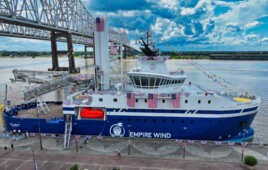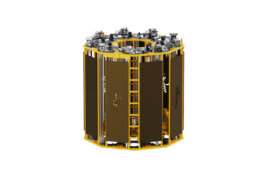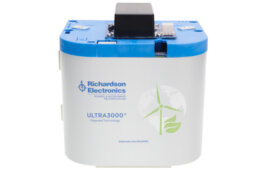This report summary comes from Wind Energy Update

How should owners to treat post-warranty O&M? As in-house work, third-party labor, or left to the OEM? That is the question.
Turbine owners and operators have more choice than ever over the best way to organize post-warranty operations and maintenance. However, with several factors to consider, operators should weigh the options of whether to stick with the original-equipment manufacturer’s contract, sign a deal with third-party providers, or manage operations and maintenance in-house.
A major advantage to owners and operators of using original equipment manufacturers (OEMs) for post-warranty operations and maintenance (O&M) is that many large suppliers have 24-hour monitoring capabilities and can manage many unscheduled responses to turbine shut-down remotely. Continuing with this service can mean faster out-of-hours response, and therefore higher availability.
Many tier-1 suppliers can also access good condition-monitoring databases, allowing early-stage diagnosis of problems with conventional drive-trains, leading to less equipment damage prior to investigation and repair.
“Keeping the door open for the OEM will more likely lead to more open discussion regarding upgrades to control systems and equipment. It is also sometimes of benefit in keeping lenders and insurers happy,” says Joe Dalton, asset operations manager at Mainstream Renewable Power.
Other advantages are that owner’s may enjoy more price control, a better integrated service package, lower risks, and the best OEM parts-pricing.
“The OEM provides owners the best chance for equipment upgrades based on new product pipelines,” says Lawrence D. Willey, Vice President of Delivery Assurance at Clipper Wind.
In-house and third-party O&M: False economy?
In-house staff or third-party companies tend to reduce fixed O&M costs. However, owners must ensure personnel are equipped with appropriate skill-sets, qualifications and experience, and manage other issues including spare-parts accessibility, quality control, H&S, and maintenance procedures. “Nonetheless, there are numerous success stories in this area, particularly in relation to generator replacements and repairs,” says Dalton.
Many experienced owners now manage O&M in-house after the initial warranty period. Benefits include lower costs, more direct control over maintenance, and no drop in performance or availability.
Although third-party contractors are a reasonable option onshore some argue there are still no contractors that developers or financiers are comfortable with using for offshore projects.
“For onshore projects there are now several companies in the UK and on the continent with expanding track records and client lists, offering a range of services, varying prices, and quite flexible scopes of work,” says Simon Luby, Advisory Services Manager at SgurrEnergy.
However, third-party or self-operating approaches may leave less leverage with OEMs over emergent issues. “An owner take-over requires a competency commitment and a learning curve that few are successful at,” says Willey.
Cost considerations
Post-warranty costs depend on size and location of operations and the nature of the O&M agreement. “Don’t expect to pay the same amount year-in and year-out for O&M, unless you are prepared to pay [OEMs] to take the risk,” says Dalton. Instead, he says, owners should consider keeping a “maintenance reserve” to cover bad years and reduce their annual fixed-cost commitment. Having said that, the costs for OEM support have reduced in many markets recently, and there are now strong opportunities to strike a balanced O&M deal with OEMs.
“The devil is in the detail. Carefully consider the terms of the agreement, and the guarantees provided. The OEM term sheet is not written in stone, and should be questioned in detail, following as much market research as possible,” says Dalton.
According to Luby, OEM post-warranty costs are typically 10 to 30% higher due to cost under-estimates during initial warranty periods, deliberate discounting of O&M costs as part of turbine sales strategies and an occasional lack of competition for post-warranty services.
“We are beginning to see higher in-warranty costs, which [OEMs say] are the full costs, [meaning] there should not be an increase post-warranty. This needs to be demonstrated when the contracts are due for renewal,” he says
Post-warranty strategies
The degree to which operators can take advantage of post-warranty opportunities depends heavily on experience. According to Luby, some make poor provisions and misunderstand pricing risks, while some are aware of long-term risks and prepare robust budgets. Others opt for price and scope certainty via longer-term OEM agreements or build in some flexibility for training their own staff.
“Others still are in discussions with third-party providers to obtain the terms and securities they want to have the confidence to switch from the OEM,” he says.
Those owners with ambitions to expand their fleets may also benefit from discussing leaner, longer-term relationships OEMs, together with extended procurement and deployment partnership strategies. “This can produce a win-win solution for all parties involved,” Luby says.
On the surface the choice between OEMs, third-parties and self-maintenance may appear to be relatively simple, based on cost considerations. But before making this cost-critical decision, turbine owners and operators are advised to be aware of the much broader range of complex factors at play.
Wind Energy Update
www.windenergyupdate.com
Filed Under: News



